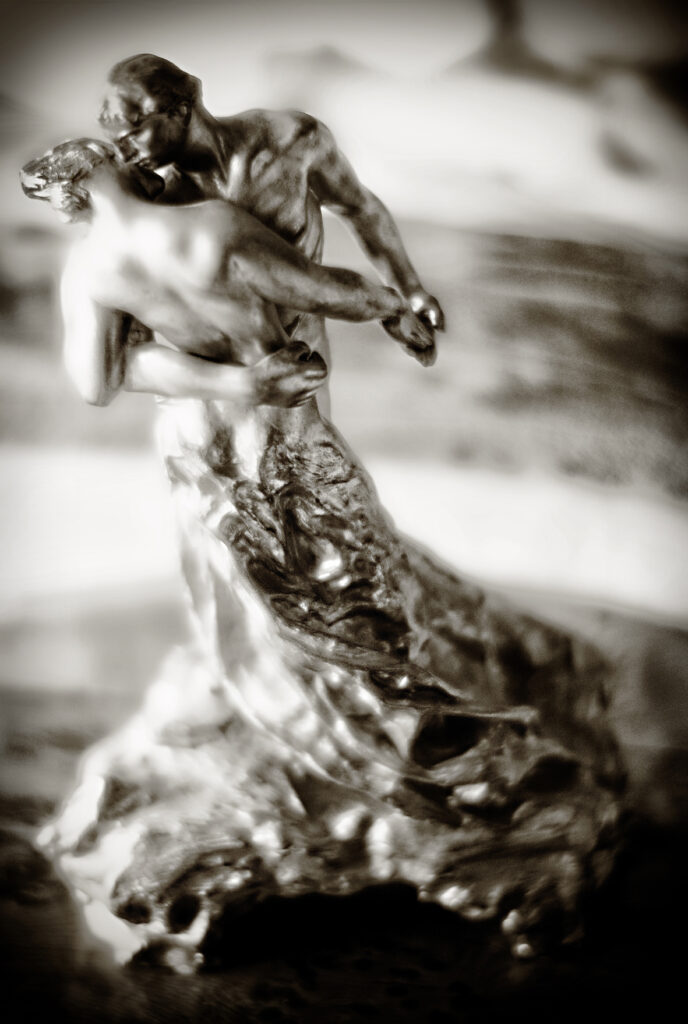
The Waltz, by Camille Claudel, public domain image
Camille Claudel was born in France in 1864. Her early education was a traditional Catholic education. As she grew older, she became interested in an artistic future and began to sculpt the human form in clay. Her mother was aghast at what she regarded as Camille’s “unladylike” interest in the arts but father was more supportive.
Camille’s father arranged to have a neighboring artist, Alfred Boucher, become her mentor. She trained with him for three years before he moved to Italy. Before leaving, he arranged for Camille to work with another sculptor.
Camille’s relationship with her second mentor grew from mentor-protégé to a romantic connection. Her family was not happy and forced her to leave home. When she ended a pregnancy, the relationship became less intimate but continued.
Sculpting required financial backing, something that was hard for a female artist to win at that time. Camille was ostracized by the artist community and led a beggar’s existence, forcing her to reconnect with her second mentor. Many of his works were inspired by Camille, but she received no credit.
Her own work began to reach artistic levels that rivaled her second mentor. She began to develop her own style leading to a jealous breakup with him. She was no longer his obedient follower. He went so far as to take credit for some of her works.
She was unable to get commissions because of her unsavory relationship with a noted sculptor and because her artistic style had begun to diverge from the more traditional tastes in sculpture.
Camille began to show signs of mental illness, and she destroyed many of her works. She was admitted to an asylum where she spent the last 30 years of her life.
Camille Claudel is little known today. Her mentor and lover, Auguste Rodin, is one of the most famous sculptors, known especially for his sculpture, The Thinker.
Just imagine how many creative women faced similar situations. Our society’s restrictive understandings of gender have long limited opportunities for women artists. Women have had a history of creative work that has often been suppressed by gender politics of the time and by men taking credit for their work. Today Camille’s sculptures are on display in most major museums around the world. Ironically, the Musée Rodin in Paris has a room focused on her works. What if we freed ourselves from the restrictive gender beliefs of our own time?
* * *
Sculpture is the art of the lonely soul; the soul that feels out of place in the world.—Camille Claudel
This is part of our “Just Imagine” series of occasional posts, inviting you to join us in imagining positive possibilities for a citizen-centered democracy.



